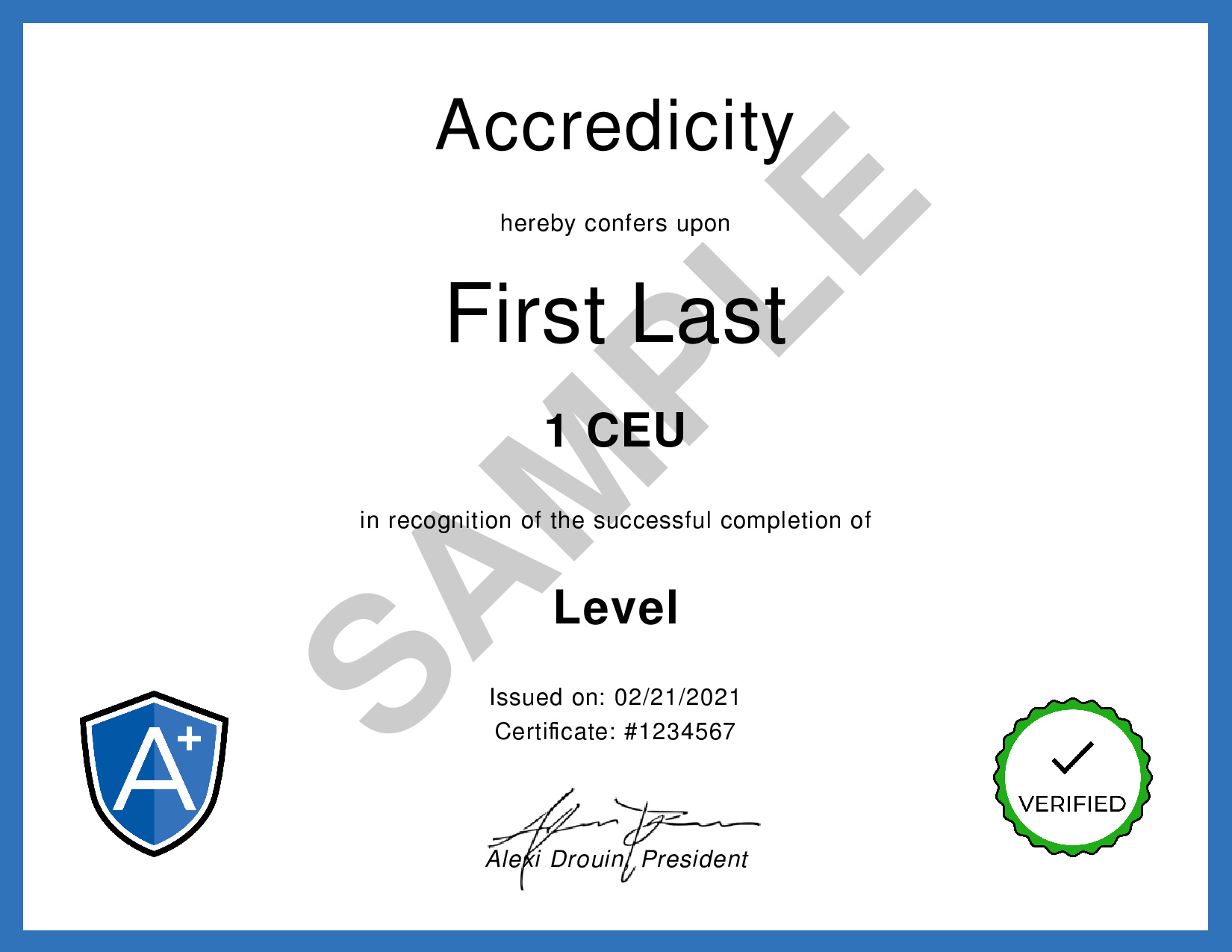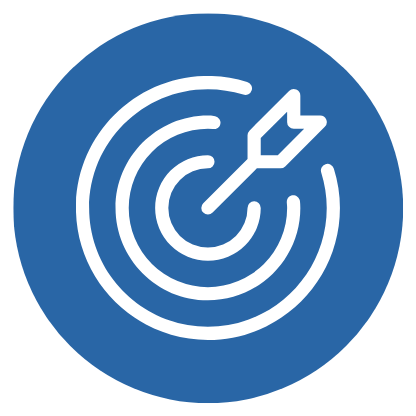Michael Seibel – How to Plan an MVP | Y Combinator
Reference: Y Combinator. (2019, August 01). Michael Seibel - How to Plan an MVP [Video]. YouTube.
We Make Your Education Count

Get the Credit You Deserve and Become the Most Attractive Job Candidate by Earning and Posting A+ Badges to Your Linkedin Profile.
Sign Up to Get Started at Accredicity
|
Learn how to plan an MVP with Michael Seibel: get users, get feedback, and iterate quickly to launch something! Michael Seibel, from Y Combinator, explains how to plan an MVP (Minimum Viable Product). He suggests that it should be something ridiculously simple that can be given to the first set of users to determine if any value can be delivered. He also advises talking to users before building the MVP and emphasizes launching something bad quickly. Seibel provides examples of successful MVPs from companies such as Airbnb, Twitch, and Stripe and reiterates that most startups should build a lean MVP in a matter of weeks. He ends his talk by reminding founders to hold the problem they are solving tightly, hold the customer tightly, and hold the solution they are building loosely. Learning Outline1. Launch something bad quickly - this is the foundational step of an early stage startup Instructional ContentCreating a Minimum Viable Product (MVP) is an essential step for any startup looking to succeed. Creating a successful MVP requires understanding the problem you are trying to solve and the customers you are targeting. Michael Seibel, CEO of Y Combinator, offers insights on how to plan for an MVP in his video How to Plan an MVP. The goal of a pre-launch startup is to launch something simple and bad quickly. This means getting customers, interacting with your product, and getting feedback. Then, iterate and improve your solution until it solves the problem. The MVP should be built fast, in weeks not months, and should have limited functionality. Michael uses three examples of successful MVPs to back up his advice. Airbnb, Twitch, and Stripe all started with simple products that lacked key features. Airbnb's first product had no payments and no map view. Twitch was only one channel streaming at low resolution. Stripe had no bank deals and almost no features. Michael's advice is simple: launch something bad quickly. Don't overthink it, just get something out there and start interacting with customers. Hold the problem and customer tightly and hold the solution you're building loosely. Iterate and improve your product until it solves the problem. With these tips and the success stories of Airbnb, Twitch, and Stripe, any startup can create an MVP and move closer to success. Management
|

Michael Seibel talks about MVPs (minimum viable products) which are the first very simple things you can give to users to see if they find any value in it. He gives the example of AirBnB, Twitch and Stripe - all successful companies who started with very basic MVPs. He encourages founders to talk to users and get feedback, and to keep their solution flexible, so that if their product isn't what the customers need, they can keep their problem and customer in mind and adjust their solution accordingly. Building an MVP should be quick - it might just be a landing page or a spreadsheet, but it's the starting point from which you can iterate and improve. It's okay if it's bad - just get it out there quickly and start getting feedback. Video Quotes"When you think about an MVP you should think about something ridiculously simple" - Michael Seibel Related Quotes"Start with the most minimal version of your product, as this will help you move quickly and test your assumptions." - Michael Seibel Competencies1. Startup and Entrepreneurship Learning Outcomes1. Remember: List the three examples of early MVPs and the main points of each (Airbnb, Twitch, Stripe). 2. Understand: Explain the meaning of MVP and the importance of talking to users before building. 3. Apply: Use the expression “hold the problem you're solving tightly, hold the customer tightly, and hold the solution you're building loosely” when developing an MVP. 4. Analyze: Compare and contrast the differences between iterating and pivoting. 5. Evaluate: Assess the importance of launching something quickly and getting initial users to interact with the product. 6. Create: Design a plan for developing an MVP with limited functionality and a timeline for launching. Sample Answers1. A minimum viable product (MVP) is a simple version of a product that can be developed quickly to test if it can deliver value to users. It is important to talk to users before and after launching the MVP in order to get feedback and iterate on the product. 2. The goal of a pre-launch startup is to launch something bad quickly and get initial customers. Founders should hold the problem and the customer tightly, but hold the solution they are building loosely. 3. Examples of successful MVPs include Airbnb's first landing page, Twitch's first version, and Stripe's Slash Dev Slash Payments. All of these had limited features but succeeded in getting customers and eventually growing into billion dollar companies. Michael SeibelMichael Seibel is a Partner at Y Combinator and the former CEO of both Socialcam and Justin.tv. He is a highly accomplished startup executive and investor with over 10 years of experience in the tech industry. He specializes in helping entrepreneurs develop and launch successful products, and his expertise in the areas of product management, fundraising, and customer acquisition make him an ideal expert to discuss how to plan an MVP. Michael Seibel is also a mentor at Y Combinator and the CEO of Y Combinator’s startup accelerator program. Learning DesignThese competencies are important for any manager or leader to learn because they are essential skills that are necessary in order to be successful. Startup and entrepreneurship are important to understand in order to create and manage a successful business. Problem solving and vision are important to be able to identify and solve problems and to develop a vision for the company. In order to help build these competencies, a framework or pedagogy that can be used is the experiential learning model. This model allows students to learn through direct experience and reflection, which will help them to be able to apply the knowledge they have gained to real world situations. Additionally, simulations can be used to help students gain practice in applying the competencies to real-world scenarios. Through this model, students will gain a better understanding of the competencies and be better prepared to apply them in the workplace. AssessmentQ: According to Michael Seibel, what is the goal of a pre-launch startup? A. To get initial customers Answer: D. Launch something bad quickly QuestionsQuestions: KeywordsMinimum Viable Product, Lean MVP, Online Reality TV, Twitch Video Games, Bank Deals Insurance, Stripe Founders Integrate Facts1. Airbnb launched without payments and without a map view. Trends1. Create a MVP prototype of a product to show potential customers and get feedback. This can include a landing page and a simple survey to gauge customer interest. 2. Use the feedback from customers to create a roadmap of the product's development. This roadmap can be used to prioritize features and plan for future development. 3. Create a simple version of the MVP with the highest priority features for a limited set of users. This can help to identify the features that will be most effective for the target customer base. 4. Iterate on the MVP based on feedback from users. This can help to focus development efforts on the features that will be most useful to the target customer base. 5. Use existing resources to create an MVP. This can include using existing software, services, and tools to create a prototype of the product. SourceThis learning instructional guidance was formulated using the GPT-3 language model created by OpenAI. ShareTime to go lean: Launching an MVP doesn't have to take months. @YCombinator's Michael Seibel shares tips on building yours in weeks! #leanstartup #startuplife 💻 @Accredicity |









 36 Creds - Management
36 Creds - Management



